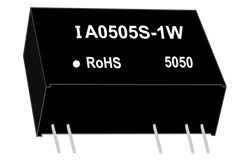noticias
Modular vs Non-Modular Power Supplies: Which Is the Better Choice?
Autor: Módulo de potencia ZYG Time: 2023-10-18
When it comes to building a computer, one of the key components that often gets overlooked is the power supply. While it might not be as glamorous as the latest graphics card or processor, the power supply is an essential part of any computer system. It is responsible for supplying the necessary electrical power to all the components in the computer, ensuring smooth and reliable operation. However, when it comes to choosing a power supply, there are two main options to consider: modular and non-modular. In this article, we will delve into the differences between these two types and determine which one is the better choice.
Firstly, let’s define what modular and non-modular power supplies are. A non-modular power supply comes with a fixed set of cables attached to it. These cables are permanently connected to the power supply and cannot be removed or replaced. On the other hand, a modular power supply comes with detachable cables that can be connected as needed. This means that you only need to use the cables that are necessary for your specific computer setup, reducing cable clutter inside the case.
One of the main advantages of modular power supplies is their flexibility. With a modular power supply, you can easily add or remove cables depending on the components you are using. This allows for a cleaner and more organized computer build, as you can eliminate unnecessary cables and only use the ones you need. Additionally, modular power supplies make cable management much easier, as you can route and hide cables more efficiently.
Another benefit of modular power supplies is their ease of installation. Since you can choose which cables to use, you can avoid the hassle of having to bundle up and tuck away excess cables. This not only saves time during the installation process but also allows for better airflow inside the computer case. Good airflow is crucial for maintaining optimal temperatures and preventing overheating, especially when using high-performance components.
In terms of aesthetics, modular power supplies also have an advantage. With fewer cables cluttering the case, the overall appearance of the computer is cleaner and more professional. This is particularly important for users who value the visual appeal of their computer setup or those who have transparent side panels that showcase the internal components.
However, non-modular power supplies also have their merits. One of the main advantages of non-modular power supplies is their lower cost. Since they come with a fixed set of cables, production costs are generally lower, making them more affordable for budget-conscious consumers. Non-modular power supplies are also generally more widely available, making it easier to find a suitable option for your needs.

Moreover, non-modular power supplies are often preferred by users who prioritize reliability. With no detachable cables, there are no loose connections or potential points of failure. This can be especially important for users who plan to move their computer frequently or for those who want to minimize the risk of accidental disconnections.
Both modular and non-modular power supplies have their own set of advantages and disadvantages. Modular power supplies offer greater flexibility, easier cable management, improved airflow, and a cleaner aesthetic. On the other hand, non-modular power supplies are more affordable and generally considered to be more reliable. Ultimately, the choice between the two types depends on your specific needs and preferences. Whether you prioritize customization and ease of use or cost-effectiveness and reliability, it is important to carefully consider your options before making a decision.
Anterior: Top Pick: 750W Modular Power Supply – Finding the Best Choice for Your Needs
Próximo: Finding the Best Modular PC Power Supply: A Comprehensive Guide
informacion relevante
-
2022-6-11
¿Qué se debe tener en cuenta al seleccionar la fuente de alimentación del módulo?
No importa lo que compremos en nuestra vida diaria, tendremos que considerar durante mucho tiempo, no solo la comparación, sino también la calidad de todos los aspectos. Por lo tanto, cuando elegimos usar la fuente de alimentación del módulo DC-DC, además de la función de conversión de voltaje más básica, también debemos considerar los siguientes aspectos: 1. Potencia máxima Generalmente se sugiere que la potencia de salida de la aplicación específica debe ser 30~80% de la potencia nominal de la fuente de alimentación del módulo. Dentro de este rango de potencia de salida, se deben utilizar completamente las características de todos los niveles de la fuente de alimentación del módulo, que deben ser abundantes y estables. Una carga demasiado clara conduce a un desperdicio de recursos de lujo, temperatura excesiva y credibilidad de...
Ver detalles -
2023-11-7
Fully Modular Power Supply: The Perfect Solution for Efficient Cable Management
Introduction: Cable management is a crucial aspect of building a computer system. It ensures that all cables are organized and neatly tucked away, preventing clutter and improving airflow. One of the key components that can aid in efficient cable management is a fully modular power supply. In this article, we will explore the benefits of a fully modular power supply and how it can revolutionize cable management in computer systems. What is a Fully Modular Power Supply? A fully modular power supply is a type of power supply unit (PSU) that allows the user to detach and attach all cables individually. Unlike semi-modular or non-modular power supplies, where some cables are permanently attached, fully modular power supplies provide flexibility in...
Ver detalles -
2023-8-13
12V AC to DC Converter for LED: Efficiently Powering Your LED Lighting Systems
Introduction In recent years, LED lighting systems have gained immense popularity due to their energy efficiency and longer lifespan compared to traditional lighting options. However, powering these systems can be a challenge, as they require direct current (DC) while most power sources provide alternating current (AC). To bridge this gap, a 12V AC to DC converter comes into play. This article aims to explore the significance of this converter in efficiently powering LED lighting systems, shedding light on its functionality, benefits, and applications. Functionality and Working Principle At its core, a 12V AC to DC converter is an electrical device that converts alternating current (AC) into direct current (DC). This process involves several key components, including a transformer, rectifier, and...
Ver detalles -
2023-4-14
Convertidor AC-DC: conversión de corriente alterna a corriente continua
An AC-DC converter, also known as a rectifier, is a device used to convert alternating current (AC) to direct current (DC). This is an important process as many electronic devices require DC power to operate. In this article, we will discuss the working principle, types, and applications of AC-DC converters. Working Principle: The working principle of an AC-DC converter is based on the fact that diodes conduct current in only one direction. A diode is a semiconductor device that allows current to flow in one direction but blocks it in the opposite direction. The basic AC-DC converter circuit consists of four diodes connected in a bridge configuration called a full-wave rectifier. When an AC voltage is applied to the input...
Ver detalles -
2023-6-21
The Electric Power Series: Advancements in Energy Technology
In recent years, advancements in technology have been changing the way we generate and consume electric power. With the increasing demand for clean and sustainable energy sources, the electric power industry has been actively researching and developing new technologies to meet the growing needs of society. In this article, we will explore some of the latest advancements in energy technology and their potential impact on the future of the electric power industry. Renewable Energy Sources One of the most significant advancements in energy technology has been the development of renewable energy sources. Renewable energy sources are those that are replenished naturally and can be used repeatedly without being depleted. Some of the most popular renewable energy sources include solar, wind,...
Ver detalles -
2023-6-18
Unlocking the Power of LEDs: A Comprehensive Guide to the LED Power Series
LEDs, or light-emitting diodes, have revolutionized the way we illuminate our world. With their energy efficiency, long lifespan, and versatility, LEDs have become the go-to choice for lighting in homes, businesses, and public spaces. However, not all LEDs are created equal. The brightness, color temperature, and overall performance of an LED light depend largely on the power source used to drive it. That's where the LED Power Series comes in – a comprehensive guide to the different types of LED power sources and how they can be optimized for maximum performance. What is the LED Power Series? The LED Power Series is a collection of power sources specifically designed for use with LED lights. These power sources are available in...
Ver detalles


















